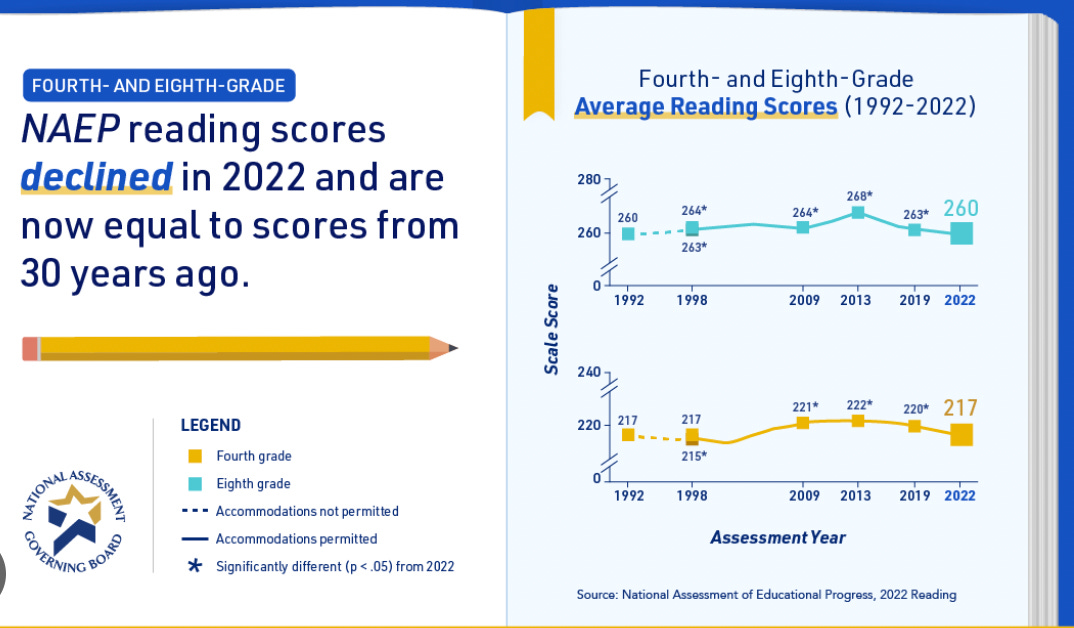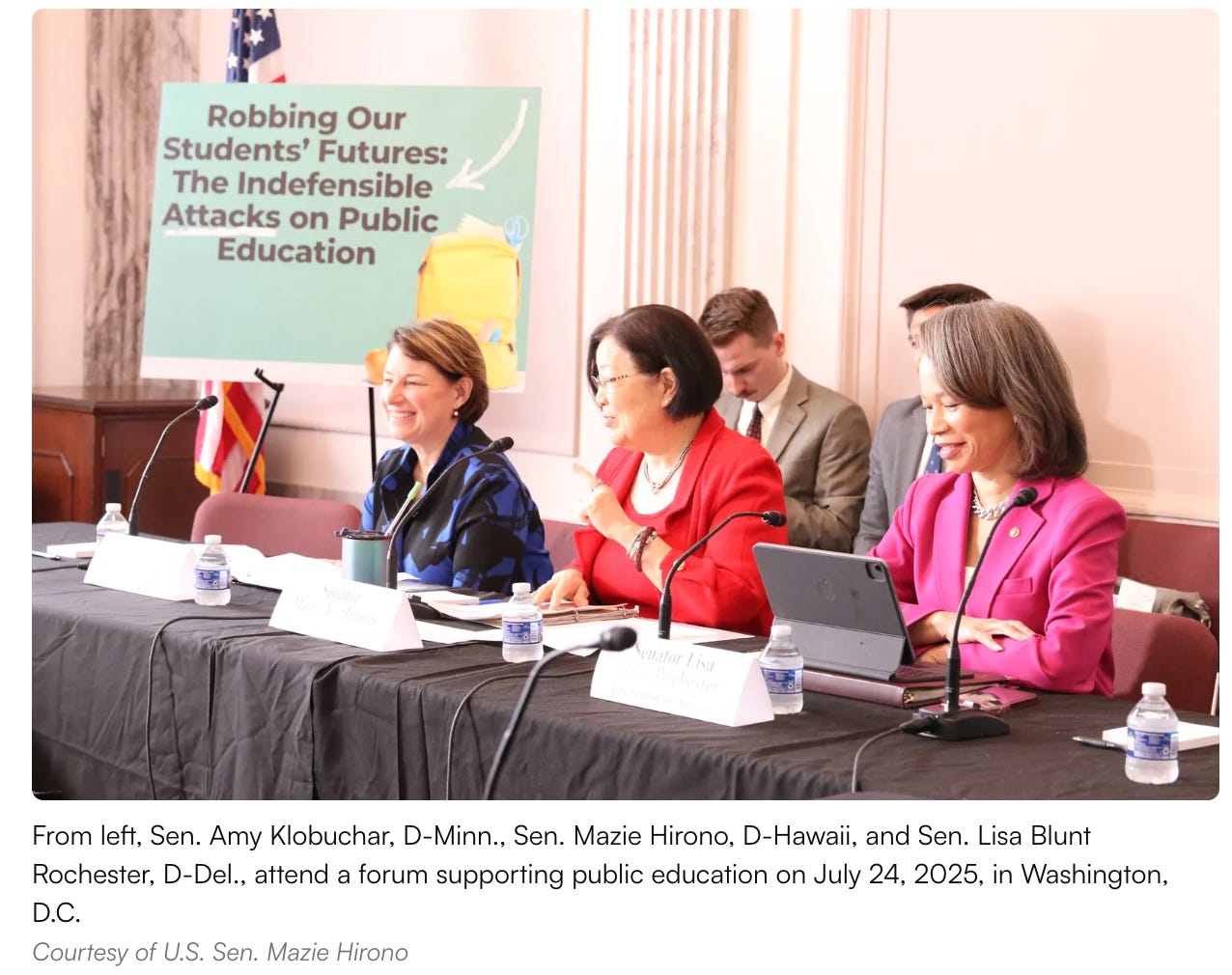You Can Do This, States
It’s a New Era
The Big Freeze
Earlier this year, to much outrage and confusion, billions in federal education funds were frozen under the pretense of reviewing alignment with administration priorities. After months of legal battles, public pressure, and pushback from lawmakers, the Department of Education finally announced the release of more than $6 billion, including funding for professional development, adult education, and after-school programs.
At last week’s National Governors Association (NGA) meeting in Colorado Springs, Education Secretary Linda McMahon told outgoing NGA Chair and Colorado Governor Jared Polis that the freeze was implemented to “take a closer look” at the programs before releasing funds.
McMahon appeared to suggest that future decisions would come with more notice. While some administration allies have defended the pause, calling it necessary, others remain skeptical. It’s still unclear who reviewed these programs or how the evaluations were made. Regardless of whether programs are federally sanctioned or Congressionally mandated, they all deserve scrutiny—with experienced eyes—to ensure the dollars are actually helping students. And if they’re not? Then it’s time to redirect them.
Governors Who Can Lead, Do
According to some reports, the supposedly bipartisan NGA took a partisan turn when the gavel passed from Colorado Governor Jared Polis to Oklahoma Governor Kevin Stitt. Some Democratic governors argued the NGA isn’t pushing back hard enough on Donald Trump—an assessment that Vice Chair and Maryland Governor Wes Moore called justified. Kansas Governor Laura Kelly announced she won’t pay her NGA dues, and Minnesota Governor Tim Walz may also step away from the group.
It’s unfortunate that Governor Kelly doesn’t show the same level of conviction when it comes to expanding education opportunity back home. Schools like Wichita-based Urban Prep Academy, which delivers exceptional education to low-income, predominantly Black students, are left to fend for themselves.
In contrast, Governor Stitt is urging governors to get back on track. He’s a proven unifier and a committed education reformer—championing workforce development, apprenticeships, higher ed innovation, education choice, and student mental health.
One of his first major priorities as NGA Chair should be rallying governors around the recent federal guidance that expands flexibility for how states can use education dollars—including shifting funds toward choice-based programs. And this, too…
Feds and Flexibility
When the feds cut education funding, it makes front-page news. But when they say states can innovate, bend the rules, and ditch outdated mandates? Crickets.
This week, the U.S. Department of Education issued a Dear Colleague Letter urging states to think big, challenge the status quo, and leverage waivers to deliver better outcomes.
Here are the top-line highlights:
The Department wants bold, parent-centered innovation urging states to help foster microschools, hybrid homeschooling, classical models and replacing broken systems with student-first alternatives.
States can ditch rigid federal tests (with approval) and can apply to pilot innovative assessments like competency-based tests, performance-based assessments and year-round or instructionally embedded testing.
Dropout recovery schools get flexibility: High schools serving returning students or those far off track to graduate can use alternative improvement strategies and potentially skip mandated improvement plans entirely if enrollment is under 100.
ESEA money is now more flexible. States and districts can move funds between Title I, II, III, and IV without prior approval and use consolidated admin funds across programs, with no separate tracking needed.
Also, you can apply to waive federal red tape if various conditions exist (which would take about 5 minutes for most states to demonstrate), e.g. the rule is getting in the way of improving student outcomes and you show a real plan to monitor and evaluate results.
What can’t be waived (no matter how creative you are)? Civil rights protections, Rules on using federal $ to supplement not supplant local funds, Charter school eligibility under federal law, parental involvement and private school equitable services and use of funds for religious instruction or worship.
Good stuff.
The New Reading Wars?
It used to be that “The Reading Wars” was the term of art used to describe the debate between teaching students how to read using direct instruction—grounded in the science of reading, with letter-sound combinations explicitly taught—and whole language, where you expose students to words on a page and help them sound things out with pictures and all sorts of fluffy stuff. (You can probably tell which side I come down on!)
Well, after years of fits and false starts, the science side finally won the day. And the fact that the new federal guidance specifically calls out literacy instruction and using funds on “reforms that support the science of reading” is great.
But today’s reading wars aren’t about how to teach reading—they’re about whether we should care at all. That’s right: whether we should be concerned that reading scores are in the toilet, or instead just explain them away through some convoluted logic suggesting that proficiency is either too high a bar or doesn't adequately reflect what’s being taught.
Both arguments are wrong. Teaching students to read—and read well—matters. But that hasn’t stopped a professor of education at Furman University from writing nonsense and getting it published in the Washington Post. In the piece, he plays a logic game that distorts the truth and does long-term harm to kids—and to the future teachers he’s training.
Among the many who were outraged, this comment from a well-known and respected curriculum expert may have said it best:
States should use their new found flexibility to reinforce what works, including maybe even paying for professors in their state to visit the states and communities which have excelled by paying attention to the data.
Dismantling What?
That’s what the head of The Education Trust claimed at a forum in D.C. last week: that a combination of post-COVID funding declines, ED Department staff reductions and expanded and new choice programs amounts to a “coordinated dismantling” of public education.
Never mind that Ed Trust was originally founded—nobly—to advocate for students not being well-served by traditional public schools, especially those from underserved communities. Now, as states level the playing field and give parents without means the chance to vote with their feet and use their tax dollars to access better options, schools that don’t meet families’ needs are losing students - and those who do are gaining.
That’s not a dismantling. That’s organic change. That’s accountability.
If anything, what’s been coordinated for decades is the protection of a status quo that has failed too many for too long.
Here’s to change. - Jeanne





